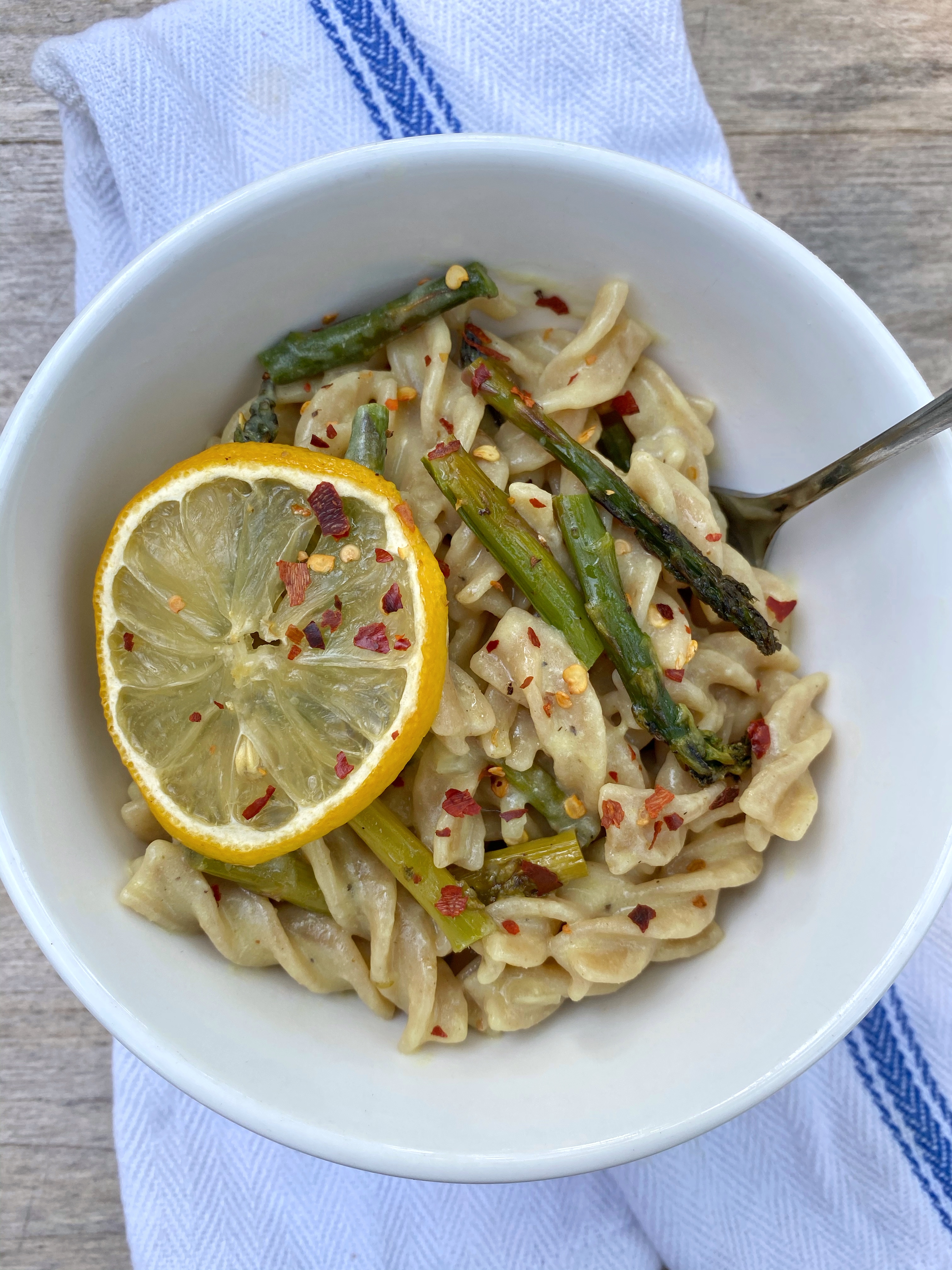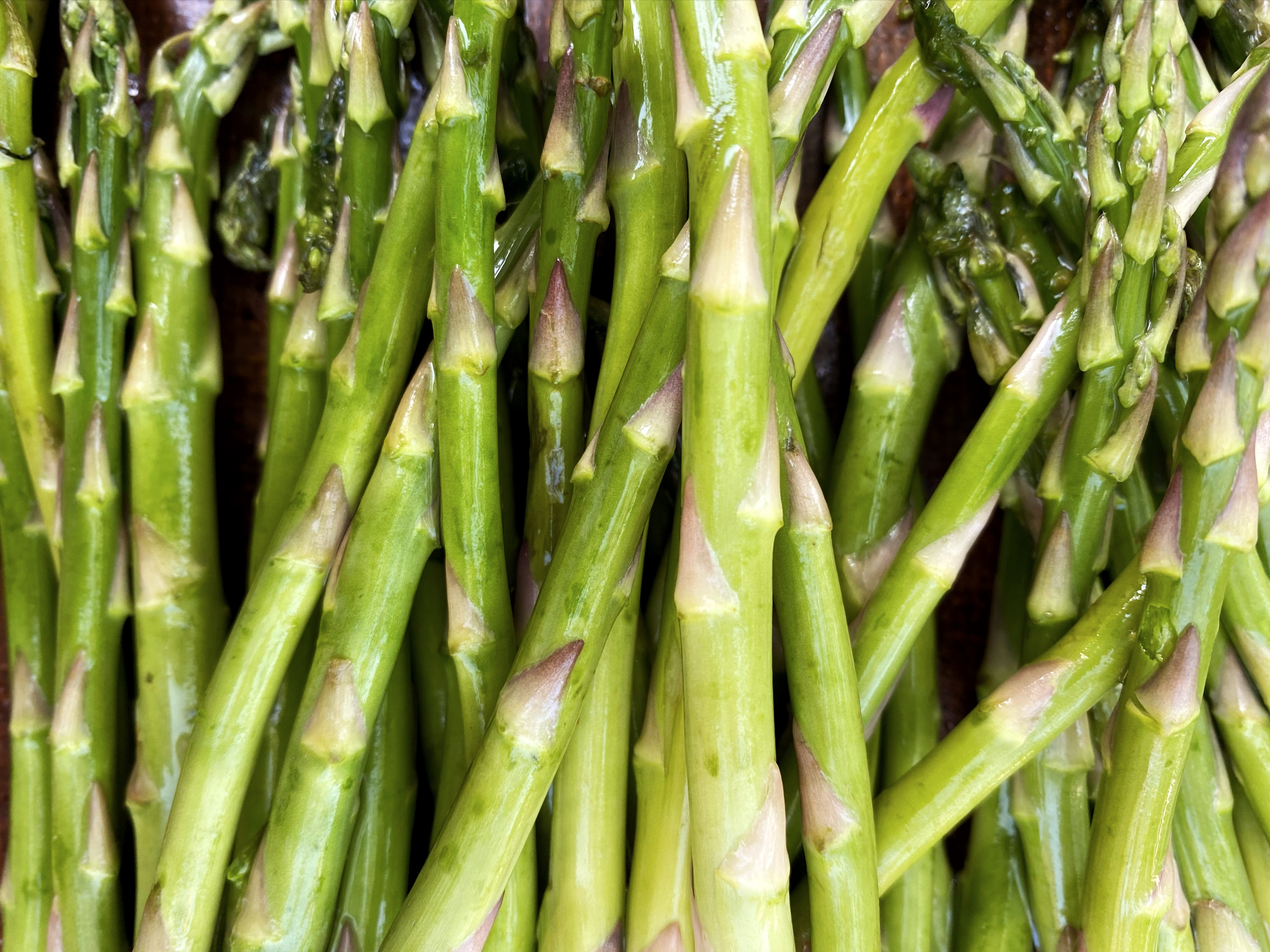What a gorgeous spring we are experiencing in Wilmington. Everything from azaleas to wisteria vines and rose bushes are in full bloom across the city. I’m not sure if it’s the fact that we’ve been cooped up inside for over a year, or if that feeling has lead to a heightened awareness of our natural surroundings – but it seems like things are extra beautiful around here lately. Either way, I’ll take it as an extra nudge to spend as much time as I can outside enjoying the natural beauty of our town.
With a return to warm weather and sunny days, that also means that tons of fresh seasonal produce starts popping up in farmer’s markets and produce sections. At the coop, we often talk about the importance of shopping local whenever possible. This helps to keep your dollars in the community, as well as reducing the distance your food travels to you. This is one of the many ways we hope to be able to serve this community in the months and years to come. However, based off availability, budget, and many other factors, sometimes eating local is not accessible to all.
We’d like to introduce you to another style of eating that goes hand in hand with eating local: eating seasonally. According to Seasonal Food Guide, seasonal food is produce that is purchased and consumed around the time that it is harvested. There are so many benefits to this style of purchasing and preparing food. In season produce is fresher, tastier, and more nutritious than its out of season counterparts.
Have you ever bitten into a sandwich, only to find the tomato was basically flavorless? Compare this to the perfectly juicy, sweet, and vibrant summer tomatoes that need little more than a sprinkle of salt and pepper to be enjoyed. Eating food when it’s in season is a way of enjoying produce as it’s meant to be enjoyed. It really is just more delicious – and that encourages you to incorporate even more fresh fruits and veggies into your diet.
Even better, most seasonal produce is actually more affordable and less processed than produce purchased out of season. The benefits go on and on! If you’re ready to start trying to incorporate more seasonal produce into your diet, start small! Add an item or two to your grocery list each week, and build a meal around them. Fresh produce needs very little added to it to be enjoyed, so try a recipe that highlights that item to enjoy its full benefits. (We’re sharing two recipe ideas below!)
Below, you’ll find a list of what’s in season for spring. Be on the lookout for these items at your local farmer’s market or produce stand!
- Apples
- Apricots
- Asparagus
- Avocados
- Bananas
- Broccoli
- Cabbage
- Carrots
- Celery
- Collard Greens
- Garlic
- Herbs
- Kale
- Kiwifruit
- Lemons
- Lettuce
- Limes
- Mushrooms
- Onions
- Peas
- Pineapples
- Radishes
- Raspberries
- Rhubarb
- Spinach
- Strawberries
- Swiss Chard
- Turnips
Featured Recipe: Creamy Asparagus Pasta
Contributed by our volunteer Kelci DeFrancesco, Positive Plate

This is an easy weeknight meal that comes together in 30 minutes or less. I kept it super simple so you can let the asparagus shine! The roasted asparagus is delicious on its own or as a side, but I really love adding it to pasta for a complete meal. By using almond milk, this recipe is vegan, and it can easily be adapted to be gluten-free as well. Serves 4-6.
Ingredients:
-1 bunch asparagus, trimmed
-salt and black pepper, to taste
-1 large shallot, minced (about 3/4 cup)
-1 lemon
-3 1/2 tbs olive oil (divided)
-3-4 large cloves garlic, minced
-16 ounces of your choice of pasta (I used whole wheat rotini)
-2 1/2 cups unsweetened plain almond milk (or regular milk)
-3-4 tbs all-purpose flour or cornstarch
-1-2 tbs nutritional yeast (optional – or add a sprinkle of cheese!)
-1 tsp ground mustard or hot sauce, optional
Instructions:
- Preheat oven to 400° F
- Trim and rinse asparagus. Toss with 1 tbs olive oil, sea salt and black pepper, then spread on a lined baking sheet. Thinly slice one half of the lemon and lay on top of the asparagus.
- Roast asparagus for 20-25 minutes.
- Cook pasta according to package instructions.
- While asparagus cooks, preheat remaining olive oil in a pan over medium heat. Add minced garlic and shallots, and sauté for 2-3 minutes, or until the mixture is slightly browned and fragrant.
- Add flour to the pan and whisk to combine, continuing to stir it for 30 seconds.
- Whisk in your almond milk, 1/2 cup at a time, stirring continuously. At this point, you can add salt and pepper, as well as the ground mustard, hot sauce, and nutritional yeast. (Nutritional yeast is completely optional, but it can add a cheesy flavor to your dish!) Taste and adjust seasonings as necessary.
- Continue stirring the mixture until you reach a smooth and creamy consistency. Allow the sauce to come to a gentle simmer, and cook on medium-low for another 3-4 minutes, or until it has thickened, and then remove from heat.
- Remove the asparagus from the oven. Allow to slightly cool, then cut into bite sized pieces. Reserve the roasted lemon slices for a garnish.
- Juice the remaining 1/2 of a lemon. Add lemon juice to the sauce and stir to incorporate.
- Add 3/4 of the asparagus to the sauce, as well as the cooked pasta. Stir to combine.
- Serve with additional roasted asparagus on top, as well as a roasted lemon slice. I also like to add crushed red pepper flakes to mine! Enjoy!
Featured Recipe: Key Lime Cheesecake with Raspberry Glaze
Contributed by our volunteer, Dhara Devane
Yields two cheesecakes, or 30 mini cheesecakes
Ingredients:
-1 cup, frozen raspberries
-1 cup sugar
-1/2 lime, juice (1 tbs juice)
-16 oz. cream cheese, room temperature
-16 oz. source cream
-3 eggs, room temperature
-2 tsp lime zest
-1 1/2 tsp. vanilla extract
-2 tbs all-purpose flour
-2 sleeves graham crackers
-1 1/2 sticks butter
-1/2 cup brown sugar
Instructions:
- Preheat oven to 325° F
- Zest lime before juicing. Reserve ½ of lime juice for pie filling. Combine raspberries, sugar, and ½ of lime juice in a small pot. Heat on high until boiling. Stir continuously. Continue to boil for approximately 5 to 8 minutes, or until glaze thickens to your preference. Remove from heat and transfer to another container to cool.
- Combine cream cheese and sour cream in a large mixing bowl and gently fold together until just combined. Add eggs, sugar, lime juice, lime zest, vanilla extract, and flour. Mix together until well combined, but do not overmix so that the cheesecakes do not crack while baking.
- Crush graham crackers in a food processor (or use a rolling pin and a large Ziploc bag) until crumb like consistency. Pour crumbs into a separate large mixing bowl and add 1 ½ sticks melted butter and brown sugar. Mix until the graham crackers absorb the butter, and there are no sugar lumps.
- Line cupcake tin with cupcake liners. Place a spoonful of graham cracker mixture into liners and press down with your fingers. Then add 3 to 4 spoonful of cheesecake mixture. Repeat for the rest of cupcake liner until finished. (if using a pie tin, place graham cracker mixture in pie tin and press down, then pour cheesecake mixture into pan).
- Bake cheesecakes at 325 degrees for approximately 15 minutes. They should appear soft and slightly risen. Let rest for 10 minutes.
- Top with raspberry glaze and enjoy! Eat after baking, or refrigerate overnight for a more solid consistency.


Comments are closed